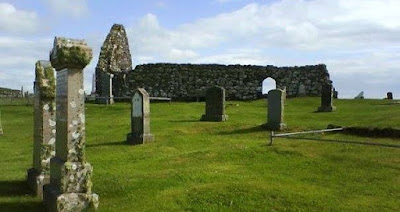 |
| Image by Kevin Ramirez from Pixabay |
If you live in the UK, perhaps you’ve noticed the recent
trend for family history-based TV programmes, particularly on daytime
television. These aren’t of the
celebrity-focused variety like Who Do You
Think You Are?, but instead attempt to answer family history queries for people
like you and me.
The oldest of these is the BBC’s Heir Hunters, which has been running for several years now, and traces the work of various probate
research firms, with the emphasis on the family trees which they build to try
and identify potential heirs to unclaimed estates. Although this has been an interesting show,
it’s running out of steam a bit now as the format grows tired. There are only so many spins you can put on
the "elderly lady who led a fascinating life dies in a care home with no known relatives" scenario.
More recently, Channel 4 aired My Family Secrets Revealed, an Ancestry.com-sponsored series where a team of regular experts used various
strategies (including DNA testing) to help people uncover their roots or debunk
family legends. These programmes covered
several different stories in each episode, and were well-presented as the
researchers sat down with the family to reveal what they had discovered about
their ancestors, and whether they really were related to Elton John. It had a good few surprises as previously
unknown cousins were introduced to each other during filming.
The BBC’s Murder, Mystery & My Family, meanwhile, takes up individual cases where a family historian feels their
ancestor has been wrongfully convicted (and usually executed). It investigates the crime and trial of the
subject’s great-uncle/grandma/other relative, using the skills of two
barristers, official documents and contemporary newspaper reports, plus information provided by the family.
The case is then presented to a judge (well, a retired one) who renders
his opinion as to whether the original conviction was a sound one. The genealogist who has submitted the case is
either delighted or disappointed at the end of the programme, but usually
manages to see the outcome in a positive light anyway.
In Scotland, a new series that has just begun is The Generation Frame. Each programme tracks the family history of two different subjects,
enlisting the help of professional genealogists and archivists. The cases highlight areas of interest to the
family historian, such as poor law records or heritage sites (like Dundee’s Verdant Works). A unique twist at the end of each
episode is the unveiling of an artwork created exclusively for each subject,
including drawings of their family members and locations with special meaning
to them. This is quite an emotional
element of the programme, and threatens to out-Kleenex Long Lost Family, ITV’s not-quite-genealogy show. It certainly makes this programme stand out as
different from the others.
Some of these programmes may be available on their
respective channels’ on-demand platforms, while non-UK viewers may not have
access to some British shows due to licensing restrictions. And then there are other countries’ editions
of Who Do You Think You Are? (the American version is sometimes shown on the BBC or on the cable channel W in the UK), and genealogy-based programmes like the “reality” show Relative Race, which is broadcast in the United States but is available to watch online outside
the U.S.
On the whole these can be informative and entertaining
programmes, but if the format remains the same it can grow a bit samey and
stale. Approaching it from a different
angle, as some of the newer shows do, can bring a fresh perspective on tracing
the family tree and give you new ideas for breaking down brick walls in your
own research.






